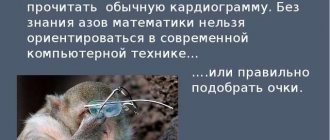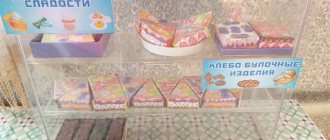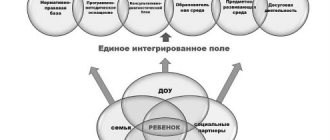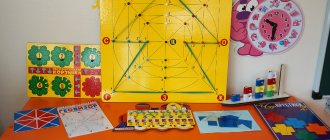On the topic: methodological developments, presentations and notes
These health sheets give a complete picture of the ongoing activities to improve the health of children every day.
To help educators, fill it out and use it.
In conditions of self-isolation, “Staying at home”, we suggest spending time usefully, instilling good habits, and adopting a healthy lifestyle. In route sheets for different types of activities prev.
Health sheet No. p/pF. I. child Health group Main diagnosis Anthropometry Furniture group beginning of the year September middle of the year ____________ end of the year ____________ height weight height weight weight 12345678910111.
Health sheet for pupils of the preschool educational institution “Kindergarten No. 195”, building 2 of the Leninsky district of Saratov, 1st junior group “Kolobok” Last name, first name Physical education group Main diagnosis.
Source
Health sheet in kindergarten
The health sheet in kindergarten is usually filled out by a preschool nurse.
The health sheet contains anthropometric indicators: the child’s weight and height. It also includes health groups, information about the child’s vision, hearing, posture, as well as information about somatic diseases (if any) and several other points that are needed to monitor the child’s health in kindergarten.
Protecting children's health is the most important task for both educators and parents. In this regard, the issue of preventing childhood injuries arises.
Show your child respect for the book and teach him to handle it carefully. Maintain eye contact with your child while reading.
Accept the child as he is and love him. Hug your child at least four, and preferably eight times a day.
After waking up, children, lying in bed, do eye exercises.
If you notice signs of aggressiveness in a child, you must first try to analyze the reasons for their appearance and identify the difficulties that the child is experiencing.
Source
Group health passport
Group 5 includes children with serious illnesses that impair organ function.
Physical development is one of the most important indicators of a child’s health and reflects general patterns of growth and maturation. Assessment of the level of physical development is carried out on the basis of anthropometric measurements using generally accepted methods.
For individual assessment of children's development (growth rate, harmonious development), tables are used that are built according to regional standards, age and gender. If the value of the child’s height and body weight corresponds to the normal limits, then the growth rate is considered timely and the body weight is normal. When height and body weight are below normal limits, growth rates are slow and body weight is reduced. If the values of height and body weight exceed the normal limits, then the growth rate is accelerated and body weight is increased. Assessment of children's physical development is carried out at the beginning (September) and at the end (May) of the school year.
The type of posture of the child is determined during a medical examination by a surgeon. To diagnose the condition of the feet, an imprint of their plantar part is taken - a plantogram. The plantogram is assessed using the method of V.A. Yaralov-Yaralenda. To do this, two lines are applied to the print: AB (connecting the middle of the heel with the middle of the base of the big toe) and AC (connecting the middle of the heel with the second interdigital space). If the internal bend of the contour of the foot print extends beyond the AC line or is located at its level, the foot is normal; if it is located between the lines AB AC, the foot is thickened (flat feet of the 1st degree); if it does not reach the AB line - flat feet of 2 and 3 degrees.
A child’s physical fitness is characterized by the degree of formation of motor skills and development of physical qualities. An examination of the level of development of motor skills is carried out using tests 2 times a year: at the beginning of the school year (in September, when the group is already fully staffed) and at the end (in May-June). Analysis of survey data shows the level and dynamics of development of basic movements and motor qualities in children and helps determine the success of mastering program material. Tests are saved from the nursery group. This allows us to identify the dynamics of development using the same indicators.
The examination of children's movement development is carried out by a physical education instructor and teachers. For the convenience of subsequent analysis, the results of boys and girls are distinguished in the examination protocol. Below is the total number of children examined and the average data. Assessment of children's physical fitness is given based on the increase in indicators over the year. The average score is displayed for boys and girls and for the entire group. In the recommendations, the physical education instructor records obvious deficiencies in the movement technique of a particular child and ways to eliminate them.
On the topic: methodological developments, presentations and notes
Fostering a culture of health in preschool settings Modern science proves that problems of health and improvement of the population go beyond the boundaries of healthcare. New scientific materials were obtained.
The implementation of the project makes it possible to provide real assistance to children with complex developmental defects and their families in a preschool educational institution.
In the content of the section “Preparing preschool children for learning to read and write”, in addition to intellectual and general speech development, the formation of phonemic perception, ideas about self.
Master class for parents “Health-saving technologies in a children's educational institution.”
Goal: to familiarize parents with modern health-saving technologies used in preschool educational institutions. Objectives: 1. show the use of technology when working with children of senior preschool age; 2. .
Family and kindergarten, having their own special functions, cannot replace each other. Only in interaction with each other do they give the child a certain social experience and create optimal conditions for entry.
Source
Documentation of a group teacher in kindergarten
(consultation for teachers)
Senior teacher: E.N. Redichkina
Due to the fact that state standards have been introduced into the educational process, for kindergartens this is the Federal State Educational Standard for Preschool Education, maintaining documentation of a preschool teacher in accordance with the Federal State Educational Standard for Preschool Education is a necessary stage of work.
According to the Federal State Educational Standard for Preschool Education, the teacher must maintain and document:
Local acts are a folder with instructions: official, occupational safety, health and life protection of children, modeled on your preschool institution. It is done once and updated periodically. Shelf life is permanent.
The list of basic documentation for the educator includes local acts to ensure the activities of the educator:
1.1. Job description of a teacher.
- 2. Instructions for protecting the life and health of children.
1.3. Labor protection instructions.
- Documentation on the organization of the teacher’s work:
2.1. The work program, which was drawn up as part of the implementation of the Federal State Educational Standard for Education by age group for 1 academic year. It reflects the main directions of educational work with children of a certain age. Take, for example, the work program “From birth to school” as a basis and, based on the general program, you need to create such a document for your group.
2.2. Planning educational activities.
2.2. Planning educational activities.
Comprehensive thematic planning. It is built on a thematic principle and allows the teacher not only to systematically solve assigned tasks and easily introduce regional and ethnocultural components, but also, depending on the characteristics of his preschool institution, at his own discretion, partially or completely change topics or topic names. Complex thematic plans are plans for working with children by season and week of each month, where general areas of work are recorded. That is, what do you want to achieve each month. Calendar plan for educational work. To specify and adjust the educational work provided for by the comprehensive thematic plan, the teacher uses a calendar plan in his work. For ease of use of the plan, the teacher divides it into two parts: the first and second half of the day. To write a plan, it is recommended, in addition to a comprehensive thematic plan, to use a cyclogram of the group’s educational activities (it is not mandatory, but very convenient and helps the teacher correctly plan his work with children during the day.)
In the first half of the day, the teacher plans conversations, individual and joint activities, reading fiction, morning, finger, articulation gymnastics, didactic games, instilling cultural and hygienic skills, and a walk.
In the afternoon - invigorating gymnastics, conversations, individual work, experimentation, role-playing and didactic games, a walk, work with parents.
The calendar plan for educational activities is a specific, detailed plan for each day. It must be consistent with the work program and comprehensive thematic plan. Here we write down everything that we will do with the children during the day: exercise, activities, games, walks, routine moments, work with parents, etc.
2.3. Model of organizing educational activities (network of classes).
The lesson grid simplifies the planning of educational activities and is a table by day of the week in which we enter all classes, including music and physical education. It helps the teacher systematize work with children during the current month. According to the requirement of SanPin 2.4.1.3049-13 “Sanitary and epidemiological requirements for the design, content and organization of the operating mode of preschool educational organizations” on the maximum permissible volume of educational activities, the load in the first half of the day in the junior and middle groups should not exceed 30-40 minutes, in senior and preparatory - 45 minutes and 1.5 hours, respectively. In the middle of the time allotted for continuous educational activities, a physical education session is held. Breaks between periods of continuous and educational activities are at least 10 minutes.
2.4 . Evaluation of the results of mastering the Pedagogical Diagnostics program. Each teacher constantly studies his students while working. Such work is carried out during observations of the activity of children in spontaneous and specially organized activities. For this purpose, the documentation of the kindergarten teacher includes observation cards of child development, which make it possible to record the individual dynamics and development prospects of each child in the course of various types of activities (speech, cognitive, artistic, play, project and physical development).
During educational activities, teachers must create diagnostic situations in order to assess the individual dynamics of children and adjust their actions.
2.5. Teacher's portfolio.
In a modern preschool institution, teachers have to work in conditions of constant competition. In most cases, a kindergarten teacher’s portfolio is a folder that is created and updated by a preschool teacher in order to improve their qualifications, for which proof of work activity is required. We can also say that a teacher’s portfolio is a kind of form for teacher certification, with which you can present materials from your work, courses attended, and successes achieved. The teacher’s portfolio is located in the group or in the methodological office of the preschool educational institution. Shelf life is permanent.
2.6. Creative folder for self-education (Shelf life - permanent). Any profession requires self-improvement, and even more so work related to children. One of the ways to improve the professional skills of teachers is self-education. This is the purposeful work of the teacher to expand and deepen his theoretical knowledge, improve existing and acquire new professional skills and abilities in the light of modern requirements of pedagogical and psychological sciences. During the academic year or other period of time, the teacher must study in depth a problem, the solution of which causes him certain difficulties or which is the subject of his special interest. Timely completion of this document also helps in collecting materials for teacher certification. Select a topic and gradually fill the folder with materials
- Documentation on organizing work with preschool children.
3.1. Attendance sheet . It is necessary in order, firstly, to record the number of children in the group daily. This helps ensure that children are fed and parental fees are paid. Secondly, it is easier for the teacher to focus on conducting classes and distributing material for each child. Thirdly, it helps to track the incidence of children in certain periods, outline the nurse’s work aimed at improving their health, and during the adaptation period, identify unreasonable omissions that complicate the child’s successful adaptation to the conditions of the preschool educational institution.
3.2. Individual information about parents and pupils . Documentation of a preschool teacher in accordance with the Federal State Educational Standard for Preschool Education necessarily involves identifying information not only about children, but also about parents. In officially accepted practice, a special journal usually contains the following information about children attending the group: - last name, first name of the child; - Date of Birth; — residential address and telephone numbers; — Full names of parents, grandparents; — parents’ place of work and telephone numbers; - social status of the family (number of children in the family, living conditions, complete - not complete family). The teacher should, in a tactful conversation, find out information from the parents and reflect it in the journal. Moreover, the received data cannot be disclosed; this information must be confidential. Now parents are also required to provide written consent to the processing of personal data. The information obtained helps the teacher neutralize the possible negative impact of the family environment on the child, if any. And you can understand the child better if you know more about his living conditions and the status of his parents.
3.3 . Age list of children. The composition of children in the same group is heterogeneous in age, and sometimes the difference can reach up to a year. The teacher must take into account the age of each child in the group, since the difference in age affects the characteristics of the individual approach to each of the children. A simple age list can help prevent some very serious problems in the group.
3.4. Health sheet for group pupils. In practice, it is important to develop a differentiated approach to children, taking into account their health status. For this purpose, groups have so-called “Health Sheets”, which are filled out by medical personnel. After all, as a rule, children do not attend preschool educational institutions due to illness. Medical staff and educators must work closely with each other. Without this relationship, competent health work is impossible. The doctor distributes children into health groups. Based on the results of medical examinations (conducted 2 times a year in kindergarten groups and 4 times a year in early age groups), depending on the nature and severity of deviations in the children’s health, the doctor gives recommendations, documenting them. In the practical work of a teacher, it is the recommendations that are important, and not the clinical diagnosis (it is a medical secret). All of the above is reflected in the “Health Sheet” for each child
3.5. Journal of hardening activities The journal of hardening activities helps to purposefully carry out health-improving activities with children while respecting the individual characteristics of the child.
3.6. Seating scheme for children at tables. As you know, for the formation of correct posture and the prevention of visual impairment, the correct seating of children at the table is of no small importance, for which a set of furniture (the height of the table and chair) is selected for each child. The height and weight of children are determined 2 times a year, respectively, a set of furniture should be determined 2 times a year. For this, we need a scheme for seating children at tables, which is adjusted as necessary depending on changes in the physical condition of the children in the group.
3.7. Group daily routine. A daily routine for warm and cold periods of time is necessary for a rational duration and reasonable alternation of various types of activities and rest for children during the day.
3.8. Children's stool map and morning filter (only for children under 3 years old). A children's stool map and morning filter allows you to identify a child's illness at an early stage and take measures to preserve the health of the children's group. The morning filter in other age groups is carried out and filled only during the epidemiological period.
3.9. Adaptation sheet. For the period of adaptation of children, another type of document is introduced - an adaptation sheet. It notes the date of admission of the child, his time spent in the preschool educational institution, and behavioral characteristics in a symbolic manner. Timely analysis of this document helps teachers identify and eliminate or smooth out the child’s adaptation problem. Based on the analysis, the joint work of “teacher - physician - psychologist - parents” is coordinated.
3.10. Register of reception and care of children signed by parents. The daily morning reception of children should be carried out by educators who interview parents about the state of health of the children, examine the pharynx, skin, if indicated, measure body temperature. In nursery groups, admission takes place with daily measurement of body temperature. During an influenza epidemic, body temperature is measured daily in all age groups. Children identified during the examination with suspected illness are not admitted to the kindergarten, and those who are ill are isolated from healthy children in the isolation ward during the day until their parents arrive.
- Documentation on organizing interaction with families of pupils.
4.1. Interaction with parents of group students. The content of work with parents is planned for a month or a week. It should be indicated on what days and what will be done by each teacher of the group, and what general garden events will be held. Moreover, it is necessary to write not only those events that are carried out by the teacher, but also by the specialists working in this group. Regardless of who conducts the classes, the organizer will in any case be the teacher. The work can be scheduled in various forms: - parent meetings, - consultations (individual, group, - workshops, - thematic exhibitions, - occasional conversations with parents, - interest clubs, - joint holidays, - entertainment and leisure, - questionnaires, - parent gatherings, - trainings - excursions, - hiking trips, - parental participation in the social life of the group, etc. How many events to plan, everyone determines for themselves. Work in kindergarten with parents should be planned in accordance with the annual goals of the institution.
The program recommends:
- stock,
— master classes
— trainings —
- evenings of music and poetry,
— visits by families to family subscription program events organized by cultural and art institutions, at the request of the kindergarten;
- family living rooms,
- festivals,
- family clubs,
— question and answer evenings,
- salons, studios,
- holidays (including family ones, - walks, excursions, - project activities, - family theater.
4.2. Minutes of parent group meetings . The minutes of parent meetings in kindergarten are an important document. Its preparation must be approached responsibly and competently. Any decision becomes valid only if there is a protocol. It must always be carried out, regardless of the degree of importance of the issues being discussed. The protocol notebook is started during the formation of the group and is maintained until graduation from kindergarten. It is numbered page by page, filed, sealed with the seal of the kindergarten and the signature of the head.
Protocol drawing up plan:
— Full name of the institution
— Date of the meeting at the preschool educational institution
— List of those present (teachers, administration, parents)
— Topic of the meeting (agenda)
— List of speakers (educators, medical worker, speech therapist, educational psychologist, heads of clubs, studios, parents, etc.)
- Solutions
— Signature of the secretary, teacher, and chairman of the parent committee.
All protocols are kept by the teacher.
All this documentation can be divided into mandatory and recommended. But what is mandatory and what is not is decided not by the teacher, but by the authorities. For competent planning and documentation, you need to firmly know the subject of the documentation: the work program of your kindergarten, on the basis of which almost all other documents are based.
The following documentation is required:
— Calendar plan of educational activities for the group;
— Teacher’s work program for his group;
- Children's attendance sheet. Recommended documentation that may or may not be kept:
— Information and regulatory folder: local acts, job descriptions, safety regulations, health regulations, etc.;
— Planning and analysis folder: information about the children, about the parents, a plan for hardening and other routine moments, a schedule of classes, a scheme for seating the children at the table, adaptation sheets, a log of children’s reception, etc.;
— Methodological support for the educational process: a comprehensive thematic work plan, a list of programs, technologies, author’s developments, materials for pedagogical diagnostics, a teacher’s portfolio, materials for self-education, work with parents and everything you have.
Theoretically, you may not keep some of the recommended papers, but experience shows that it is better that you have as many documents as possible, since verification will not listen to your excuses that you did not know that this is not necessary.
If you are not a fan of long texts, you can switch to cards. This is not prohibited and very convenient. A file of work with parents, a grid of activities, work plans can be drawn up in the form of separate sheets of cardboard with written activities.
An example of comprehensive thematic planning according to the Federal State Educational Standard for Education.
List of basic teacher documentation
1. Local acts to ensure the activities of the teacher: (storage period - permanent)
1.1. Job description of a teacher.
1.2. Instructions for protecting the life and health of children.
1.3. Labor protection instructions.
2. Documentation on the organization of the teacher’s work:
2.1. Basic general education program of preschool education by age groups.
2.2 Scheduling
2.3. GCD schedule.
2.4. Monitoring of children’s achievement of the planned results of mastering general education (pedagogical diagnostics, monitoring of integrative qualities) (Shelf life: 5 years).
2.5. Equipping a subject-development environment in accordance with the age group.
2.6. Teacher's portfolio (located in the group or in the methodological office of the preschool educational institution. Storage period is permanent).
2.7. Creative folder for self-education (Shelf life - permanent).
2.8. Group passport
3. Documentation on organizing work with preschool children.
3.1. Children's attendance sheet (the attendance sheet is laced, numbered, and sealed).
3.2. Group daily routine for warm and cold periods of time.
3.3. Morning filter (only for children under 3 years old) and during the epidemiological period in all groups.
- Documentation on organizing interaction with parents and families of students.
4.3 Minutes of parent group meetings.
(Source - Internet resource)
Leave your comment
Gift certificates
Every third student is behind in school
Reading time: 3 minutes
The Ministry of Health will allow research on Sputnik V on children over 12 years old
Reading time: 1 minute
Accreditation of Russian universities will become indefinite from March 1, 2022
Reading time: 2 minutes
In Russia they will create a “white Internet” for schoolchildren
Reading time: 1 minute
Scientists make protein-shaped gummies to help blind children learn chemistry
Reading time: 2 minutes
Low ability to independently complete tasks leads to learning difficulties
Reading time: 3 minutes
Responsibility for resolving any controversial issues regarding the materials themselves and their contents is taken by the users who posted the material on the site. However, the site administration is ready to provide all possible support in resolving any issues related to the work and content of the site. If you notice that materials are being used illegally on this site, please notify the site administration using the feedback form.
All materials posted on the site were created by the authors of the site or posted by users of the site and are presented on the site for informational purposes only. Copyrights for materials belong to their legal authors. Partial or complete copying of site materials without written permission from the site administration is prohibited! The opinion of the administration may not coincide with the point of view of the authors.
Source




